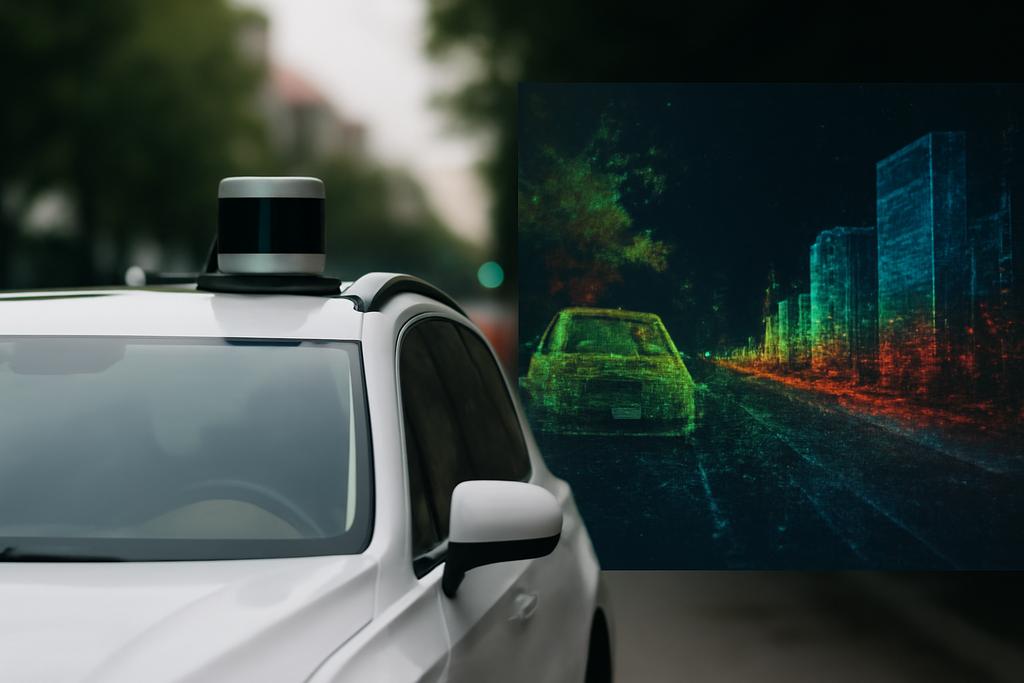Autonomous vehicles are essentially sophisticated robots navigating a chaotic human world. They accomplish this breathtaking feat by constantly collecting and analyzing massive amounts of data from their surroundings, primarily in the form of point clouds—trillions of 3D points representing objects and surfaces. This data is the raw material for everything from collision avoidance to traffic analysis, but it’s an ocean of information, and extracting useful insights efficiently is a formidable challenge.
The Point Cloud Conundrum
Imagine trying to understand a city’s traffic flow by looking at a massive pile of individual Lego bricks, each representing a car, a pedestrian, or a streetlight. That’s essentially the problem autonomous vehicles face. They need to quickly answer questions like: “How many cars are within a 50-meter radius?”, “Is there a sudden increase in pedestrian density near this intersection?”, or “What’s the average speed of vehicles on this road segment over the last minute?” To do so, they must sift through terabytes of point cloud data in real-time.
Researchers at RMIT University and Queensland University, along with CSIRO, have tackled this data deluge with a new approach. Their work, led by Xiaoyu Zhang, Zhifeng Bao, and Hai Dong, focuses on improving the accuracy of extracting specific information from point clouds, a crucial step often overlooked in the rush to build faster search algorithms.
Beyond Faster Search: The Importance of Accurate Counting
Current methods for querying point cloud data tend to focus on efficient search algorithms. The assumption is that object detection models accurately identify and count objects in each frame—a process analogous to having a perfectly reliable Lego sorter that instantly categorizes each brick. But in reality, those detection models are far from perfect. They struggle with occlusion (when one object hides another), varying object sizes, and complex scenes.
The researchers’ key insight was that accurate object *counting* is fundamental to answering most queries. If the detection model miscounts the number of cars in a frame, any conclusions based on that count will be flawed—no matter how fast the search algorithm is. Think of it as having a perfectly fast Lego sorter, but one that frequently mislabels bricks.
CounterNet: A Heatmap-Based Approach
To address this problem, the team developed CounterNet, a neural network that generates heatmaps to count objects. Heatmaps are visual representations where brighter regions correspond to higher probabilities of an object’s presence. Unlike typical object detection models that focus on precisely locating the boundaries of objects, CounterNet hones in on object *centers*, providing a more robust approach to counting, even in crowded or cluttered scenes. This simplifies the task and makes the counts more reliable.
The network’s architecture is cleverly designed. First, a backbone network processes the point cloud data to extract relevant features. Then, these features are projected onto a 2D bird’s-eye view (BEV) map—imagine looking down on the scene from above. Finally, a heatmap is generated for each object category, with peaks in the heatmap indicating the likely centers of objects. The number of peaks corresponds to the object count.
Optimizing CounterNet for Accuracy
To boost CounterNet’s performance, the researchers introduced several clever refinements. They partitioned the BEV feature map into smaller regions (like dividing a large Lego pile into smaller, manageable bins), making it easier to count objects in dense areas. To further prevent objects from being split across partitions, they incorporated overlaps between the regions, akin to slightly enlarging the Lego bins to ensure no brick falls between cracks.
Finally, they added a dynamic model selection strategy. Because scenes vary wildly in complexity, a single model might not perform optimally across all situations. CounterNet cleverly selects the best-performing configuration for each incoming point cloud frame, like choosing the right tool for the job from a toolbox. This adaptation significantly improves the accuracy of the object counts.
Results and Impact
Testing CounterNet on three real-world autonomous vehicle datasets (nuScenes, KITTI, and Waymo), the researchers demonstrated a significant improvement in object counting accuracy—a boost ranging from 5% to 20% across various object categories. This translates directly into more reliable query results for all three query types they defined: retrieval (finding specific frames), counting (quantifying objects), and aggregation (summarizing data over multiple frames). The implications are far-reaching.
A Leap Forward for Autonomous Driving
The research represents a critical advancement in the field of autonomous driving. By focusing on improving the accuracy of the fundamental building blocks of perception—object counting—the researchers have laid a solid foundation for more robust and reliable autonomous systems. Their work isn’t just about faster search; it’s about building trust and ensuring safety in a complex and dynamic world. The improved accuracy in point cloud querying translates to better decision-making by self-driving cars, paving the way for more reliable and safer autonomous vehicles.
This refined approach to point cloud querying allows for more sophisticated analysis of the environment, leading to potentially faster and more accurate responses to changing driving conditions. This is more than a technical improvement; it’s a critical step toward making self-driving technology truly dependable.










